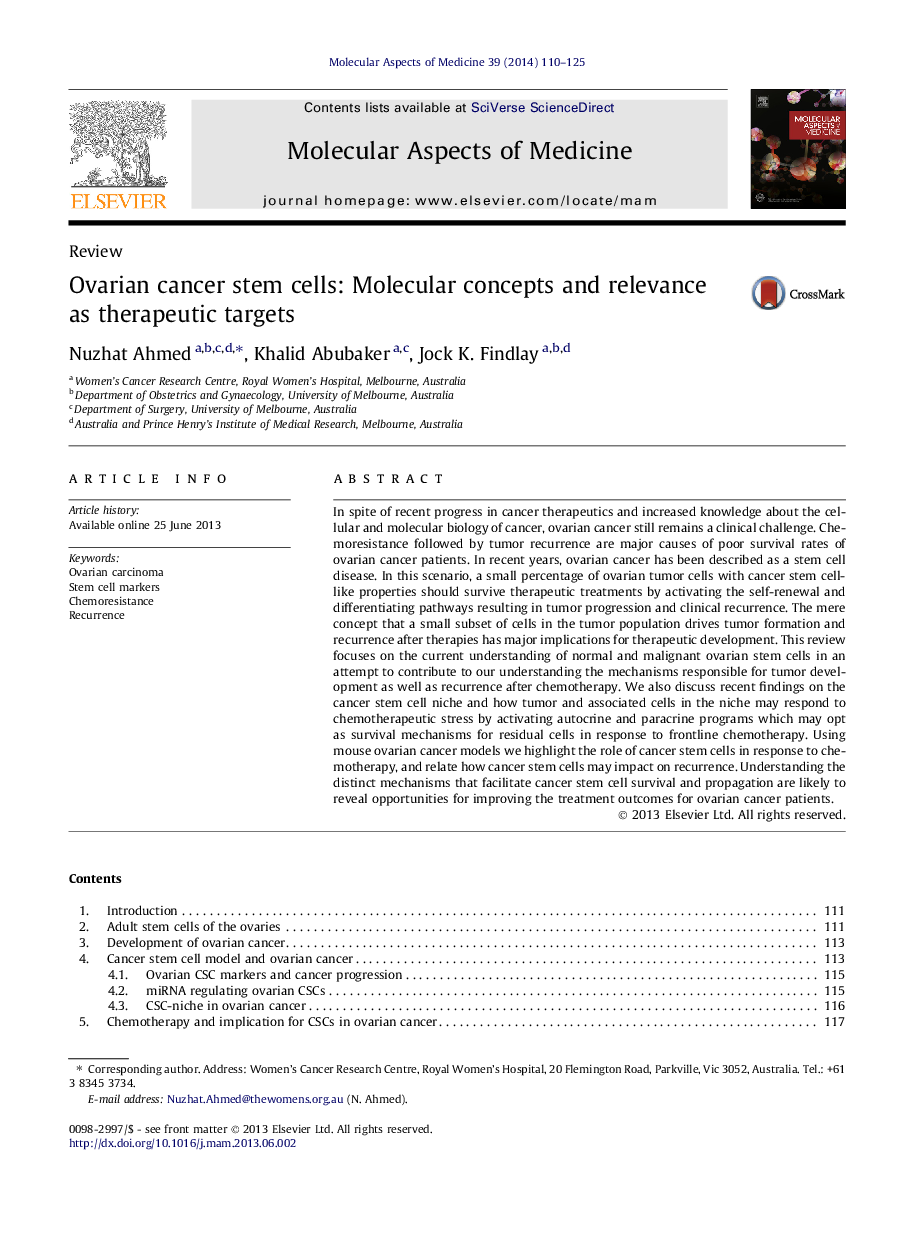| Article ID | Journal | Published Year | Pages | File Type |
|---|---|---|---|---|
| 1995631 | Molecular Aspects of Medicine | 2014 | 16 Pages |
In spite of recent progress in cancer therapeutics and increased knowledge about the cellular and molecular biology of cancer, ovarian cancer still remains a clinical challenge. Chemoresistance followed by tumor recurrence are major causes of poor survival rates of ovarian cancer patients. In recent years, ovarian cancer has been described as a stem cell disease. In this scenario, a small percentage of ovarian tumor cells with cancer stem cell-like properties should survive therapeutic treatments by activating the self-renewal and differentiating pathways resulting in tumor progression and clinical recurrence. The mere concept that a small subset of cells in the tumor population drives tumor formation and recurrence after therapies has major implications for therapeutic development. This review focuses on the current understanding of normal and malignant ovarian stem cells in an attempt to contribute to our understanding the mechanisms responsible for tumor development as well as recurrence after chemotherapy. We also discuss recent findings on the cancer stem cell niche and how tumor and associated cells in the niche may respond to chemotherapeutic stress by activating autocrine and paracrine programs which may opt as survival mechanisms for residual cells in response to frontline chemotherapy. Using mouse ovarian cancer models we highlight the role of cancer stem cells in response to chemotherapy, and relate how cancer stem cells may impact on recurrence. Understanding the distinct mechanisms that facilitate cancer stem cell survival and propagation are likely to reveal opportunities for improving the treatment outcomes for ovarian cancer patients.
